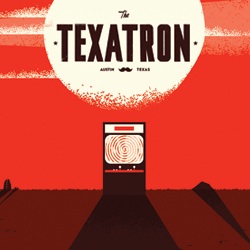RAGDOLL METAPHYSICS: INTROVERSION ON MATHEMATICAL CITIES, GAMING THE PIRATES & THE REDEMPTION OF PROGRAMMER ART
Time for another fireside chat with a developer. This time it’s a programmer named Chris Delay, the man who is the algorithmic heart of independent developer/publisher Introversion. These British independents are just a couple of years younger than me, and they started out when I started out as a journalist. As a result I’ve followed their progress quite closely.
They’ve gone from making a quietly clever hacking game through to talking about procedural generation of urban landscapes as the key theme to their latest, unrevealed game, Subversion. What follows is a perspective that is neither that of a fundamentally “indie” team like 2D Boy, nor that of a mainstream developer. Introversion have, somehow, cut their own path. It’s a fascinating story that promises to get even more interesting in the years to come.
Not everyone is lucky enough to be familiar with the world of Introversion “Last Of The Bedroom Programmers” Software, so let’s look back at what you’ve been doing over the past eight years. Chris, what have you been doing?
Chris Delay: Well, we’re quite a small developer, and we started out in 2001 with a hacking game called Uplink. That was basically a game I made while I was at university. We launched that from our website, and got it into high-streets in the UK. That did quite well, really, and then we spent about three years making our second game, Darwinia. That was a strange game, which won awards and got good reviews, but it took so long to make that we had to troll along for nine months with zero income. Eventually, finally, we got the game out on Steam, and it was the Steam deal which finally brought us a little big of financial security. Darwinia hadn’t sold well on launch, so having the Steam guys put it on their system got us a comparatively huge number of sales.
I’m still processing that bit about retail in the UK. You got your indie game about hacking on shelves in the UK?
CD: Yeah, it was a pretty major coup for us. It was about 2002, and so the game had been sale on our website. None of us knew anything about how this stuff worked. Mark and Tom went into HMV on the highstreet and asked a guy behind the counter how to get a game on their shelves. This guy said they had to speak to the manager, and he told them to speak to a distributor. We ended up speaking to Pinnacle Software and made a deal to have the units distributed to shops. We produced all the units, so we were acting as publisher and developer. It gave us a huge amount of confidence, we felt we could genuinely operate as an indie publisher and developer. It was a different market then, however. (more…)
See more posts about: Introversion, Offworld Originals, Ragdoll Metaphysics
RAGDOLL METAPHYSICS: WHY REAL TIME STRATEGY IS THE GENRE OF THE YEAR
Suddenly, almost out of nowhere, real-time strategy was the most important genre in the games store. Over there a Halo Wars placard, behind me the launch rack filled with the localised embossing of Empire: Total War (above), and on the shelf next to where a pretty girl has been looking bored: a copy of Pikmin Wii.
When I get back to the office I’ll be interviewing the lead designer of World In Conflict – which is being relaunched for the Ubisoft ownership – and then I’ll probably play some more of minor Russian epic, Men Of War. Or perhaps I’ll get on with messing around in the Battleforge beta – EA’s mix of card-gaming and real-time fantasy warfare.
Sure, there’s PC bias to all this, but there are copies of Red Alert 3 and EndWar sat amid the stack of green plastic atop my busy little 360 too. The real-time strategy is reaching out into every platform, and into the collection of every gamer. The avalanche of RTS games that began before Christmas seems to be picking up momentum as we enter 2009: they’re exploding out of every orifice in the games industry. (more…)
See more posts about: Offworld Originals, Ragdoll Metaphysics
RAGDOLL METAPHYSICS: QUAKE WARS DESIGNER ED STERN ON BLIND LUCK AND THE PROBLEMS OF ORIGINALITY
Ed Stern is a senior games designer at Splash Damage, the UK studio that made Enemy Territory: Quake Wars. In this wide-ranging conversation we discuss the fluke of luck that was the original Enemy Territory game, and why originality might not be the best thing for game designers to pursue.
So let’s talk about games, in the first of my quaint fireside chats with developers. I will have already set the scene for readers by now, via some introductory text, so let’s plunge in. You’re known as senior games designer at Splash Damage…
Ed Stern: Yes, I worked on both the Enemy Territory games. I’m always a bit baffled by job titles. There is some standardisation of that stuff across the industry now, but the reality of the job from one studio to the next could be radically different. It’s much the same in TV or the film industry, “assistant director” might mean the guy who had incredible input to the film, or he might just have sat in the trailer doing paperwork. Game designer is a pretty general catch-all, every artist and coder and tester is helping designing the game too…
But you, at least, had some design input with the big break for Splash Damage, Wolfenstein: Enemy Territory, a game that was enormously popular. A huge game for a very small company?
Stern: Well it was the result of a huge amount of work by Splash Damage, very little of it done by me. Splash Damage is Paul Wedgwood’s company, and much of it his graft. But it was also the consequence of a huge amount of luck, without the excellent intervention of Id Software and Activision we would never have got to work on the game. And sometimes that good fortune feels grossly unfair.
I keep hearing about people evidently considerably more talented than me who have been working in the industry for years and never seen a game released. Nothing wrong with their work, just bad luck with publishers or the business side of things. I feel pretty lucky to have had two, OK, arguably one and a half games shipped in my seven years, and have both of them be kindly received. (more…)
See more posts about: Offworld Originals, Ragdoll Metaphysics
RAGDOLL METAPHYSICS: GOOD GRIEF, THE VICTORY OF EVE’S SPACE GOONS
Something Awful’s Eve Online wing, GoonSwarm, has claimed what will likely go down in internet history as its greatest victory. It was an event described in a Metafilter headline thus: “It’s as if Apple dissolved Microsoft“.
That’s an incredibly accurate diagnosis of the events of last week. Thanks to a brutal betrayal of trust by an Eve player, the Something Awful superpower has used the game’s strange organisational mechanisms to take their arch-rival’s name away from them. Band Of Brothers (BoB), once the most feared of alliances, is now gone for good. The Goon victory wasn’t a great battle, nor a tremendous war brought to an end. Instead it was an inspired defector that led to the dissolution of one of Eve‘s most significant brands. It was a classic instance of underhand warfare tactics from the real world: sabotage by a traitor, trashing vital infrastructure, and leaving the gates of the fortress unlocked.
So what does it all mean? And how did it all come to pass? What it means is that upwards of several million man hours of work have been instantly obliterated, and a relatively peaceful region of Eve Online has been plunged into fresh war. The equivalent real-world costs are almost incalculable, given the sheer number of factors involved, and the thousands of people who have contributed to BoB. But it’s safe to say that we’re talking about hundreds of thousands of dollars in virtual investment put at risk. (more…)
See more posts about: Eve Online, Offworld Originals, Ragdoll Metaphysics
RAGDOLL METAPHYSICS: MEMORIES OF 2003, OR WHY WE NEED PLANETSIDE MK2
During a few quiet moments during the battle of blog-reading gentlemen that is our Planetside war, I found myself thinking back to 2003, otherwise known as The Bravest Year of the MMO.
It was the year that I spent the summer in a rented upper bedroom, playing both Planetside and Eve Online ’til dawn each day. Here, at last, were two massively multiplayer games that stretched the model to breaking point. My memories of Everquest awkwardness had been been swept away and replaced with what I assumed were just the first in a succession of brilliant new uses of MMO technology.
Neither game seemed particularly finished or well bug-tested, and they were nevertheless magnificent in their scope and ambition, and in their real-time combat. I began to extol the virtues of their genre-busting nature to anyone who would listen, and I recall a journalist colleague telling me that “both those games will be gone by next year, you mark my words.” (more…)
See more posts about: Offworld Originals, Ragdoll Metaphysics
RAGDOLL METAPHYSICS: SOAP OPERA & THE SIMS
Next month sees the release of The Sims 3, the second sequel to one of the most popular videogames of all time. What’s interesting about the series is not simply its success, but the fact that it has essentially created a genre of its own. There are very few social people-sim games, and none that can even pretend to rival The Sims. I think Sims 3 will be the last Sims title that will launch with that kind of comfort zone. Its time as a one-game genre will soon be up.
The Sims is a game that has, quite deliberately, tapped into the mainstream of modern life, not just mechanistically (in a game about everyday lives), but aesthetically and fictively (with stories about, er, everyday lives). All of which led me to think about where it is that The Sims connects to culture generally. Where outside games do we see similar methods? Where are the resemblances and likenesses across media? Where else does this kind of appeal-to-everyday stuff really connect with our culture? I’d say it was in soap opera. (more…)
See more posts about: Offworld Originals, Ragdoll Metaphysics
RAGDOLL METAPHYSICS: TEN THINGS THAT MADE ME GLAD TO BE A GAMER IN 2008
There maybe be spoilers ahead, but while there’s volumetric-lighting, and Love and romance…
1. Not having enough time to play it all. If there was nothing else to remember 2008 by, there was at least the sheer fact of there being too much to play. In the past few months I’ve struggled to even know what to boot up, let alone what to persist with, what to bin, what to save for the dark months after Christmas, and what to avoid lest it eat my entire life. It was easier to sit there, paralysed by indecision, reading through everyone else’s experiences of these games in internet forums.
Clearly I’m too lazy to perform any kind of accurate metric study here, but I’m fairly sure this has been the single busiest fourth quarter in the past fifty seven years. The variety has been refreshing too: from Saints Row 2 through to Mirror’s Edge, from LittleBigPlanet to Dead Space. The mainstream has been hitting its stride and delivering convincing, intimidating monoliths of game timesink. I mean, I think it was a good thing the Fallout 3 story is so short. It meant I had time to buy Christmas presents for my loved ones… (more…)
See more posts about: Offworld Originals, Ragdoll Metaphysics
RAGDOLL METAPHYSICS: 2008 AND THE INDIE RENAISSANCE
There’s nothing about 2008 that I’ll remember more fondly than the bold success of independent games developers. Based on the past couple of years, and the guiding lights of companies like Introversion, I had been anticipating some positive trends for 2008, but things really started to clarify at February’s San Francisco GDC. The signs were all there: 2008 was going to be a crucial year for the indie gaming scene.
It’s fair to say that the Independent Game Summit was brimming with energy, and the independent developers had more to say – and more to be happy about – than any of the scores of well-paid big-studio professionals who were strolling lackadaisically around the convention centre halls. In fact, seeing games like World of Goo and Fez in motion was pretty unsettling: they were so imaginative, and so cogent, that the idea of their being built up by two man teams seemed absurd. If I were a developer working in a big studio game, I would have been rethinking my life choices around that time. (more…)
See more posts about: Introversion, Offworld Originals, Ragdoll Metaphysics
RAGDOLL METAPHYSICS: LEFT 4 DEAD, THE THINKING MAN’S BRAINDEAD SHOOTER
“It’s totally worth giving up TV real estate to be able to punch your buddy in the shoulder during friendly fire incidents,” says Valve’s Left 4 Dead development frontman, Chet Faliszek. He’s talking about the split-screen mode on the Xbox 360 version of the spectacular multiplayer zombie shooter – something that inquisitive players recently dug out of the PC demo code. As it turns out, the PC will actually support that split screen version too, although you might need someone on an Xbox pad and someone on mouse and keyboard to make it work.
I was lucky enough to sit down and play the full game on a high-end PC with a huge Dell monitor, alongside three of my closest friends, all of whom had a similar rig. Ideal conditions, you might say, for a four-player PC shooter. Especially since we were playing against Valve themselves… But however you intend to play this game, you’re definitely going to get a special kind of kick out of it. The 360 version (there will be nothing on PS3) has already generated massive interest, and Faliszek revealed that early numbers outweigh even the pre-orders of Valve’s previous console outing, The Orange Box (Portal, Team Fortress 2, Episode 2). The zombie apocalypse is coming, and it’s going to be multi-platform.
It works like this: you play as one of four survivors who must co-operate to escape the zombie hordes. There are four hour-long campaigns, each with four sub-sections. Getting through them is a grueling, thrilling cycle of zombie horror and astonishing slaughter. Even if one person drops from a survivor team there are still four characters: Valve’s remarkable AI takes over within moments, allowing that person to return a few minutes later, or not at all. (As my buddy discovered to his peril when we argued that we’d rather keep the bot after his restroom break.) This seamless AI handling means that the game can be played solo, or with just a couple of people: the vital four-man fireteam of the survivors remains intact – a vital necessity, as you can’t survive without buddies to drag zombies off you, or to save you from tumbling off a roof.
The computer intelligence goes even further than this, however. Left 4 Dead is never the same on any single play-through, and that’s not just down to human free will, there’s also an unseen hand at work: The Director. This smart piece of programmer effectively controls the ebb and flow of the teeming zombie masses. And we mean teeming. The Zombies are fast – 28 Days Later fast – and they come pouring out of tower-block windows or churning over fences. The Director’s job is to make things dramatic each time you see this, and it does that by varying the pacing, and delivering huge surges of zombie attackers when the moment is right. Think you’re just about holding off that screaming mass of bodies coming towards you down that alleyway? Then look behind you…
The aptitude with which this artificial system delivers moments of surprise and terror is quite startling, even spooky. Portal writer Erik Wolpaw claimed that “We’ve started attributing real-life events to The Director…” And you can see why. Just when you’re about to make it to the safe-room, or to get yourself out of a tight spot, things only get worse. The Director knows exactly what’s happening on the level at all times, and it’s going to make things harder for you. Particularly when The Witch is involved. This is one of the boss infected – super-zombies that are vastly more powerful that the sprinting, rotting hordes you face moment-to-moment. The Witch doesn’t like to be disturbed, and if you can avoid her it’s best to leave her alone. Startle her with bright lights, gunfire, or close proximity and, well, things get bad.
The boss infected each play their own crucial roll – vomiting on you to attract and enrage nearby zombies, strangling you with prehensile tongues, or simply pinning you down to rend your flesh. It’s in the Versus mode that these abilities will really have an impact – as players step behind the scenes of the zombie flick to become the infected. Versus mode sees two teams of four-aside swap places across the four sections of each campaign, and the competition becomes fierce as each one tries to outdo the other in griefing the survivors as they run for their lives. Play well and the survivors won’t even make it out alive, fail to make the most of your unnatural abilities and a co-ordinated survivor team will come through with nary a scratch. Needless to say, Valve flattened us quite firmly in our Versus session. A harsh-but-firm lesson in how much skill it actually takes to play the bad guys.
It’s hard to see Left 4 Dead failing to be anything other than a critical and commercial smash hit. The concept was fully playable almost two years ago, the full focus of the Valve team in the intervening months has smoothed and sculpted this into another multiplayer masterpiece. Between the B-movie in-jokes, the rounded, chatty characters, and the sublimely-timed moments of sheer panic, it’s hard to imagine another zombie game ever having quite the same impact again. The question that hangs over Left 4 Dead isn’t so much about how much players are going to love it, but more about /how long/ they’ll love it for. Will those four campaigns really be enough to satiate our hunger for novelty? Will the asymmetric Versus mode stand up to long-haul competition?
Perhaps the true, crucial question going forward is whether Valve are intend on supporting this game as they have Team Fortress 2, with free follow-up updates in the coming months? “Definitely,” says Faliszek, and they’ll be knocking out detailed tutorials for people to build and implement their own campaign maps too. “Turning your college or office into a level should be relatively easy,” says Faliszek, as if that’s the most natural urge in the world. And, with a few hours of battling the infected under your belt, maybe it is.
Left 4 Dead is available on Xbox 360 and PC from November 18th. The demo is out now on Live and PC.
[Jim Rossignol is an editor at RockPaperShotgun.com and the author of This Gaming Life, an account of the life of modern videogames and some of the people who play them. Ragdoll Metaphysics is his Offworld column exploring and analyzing gaming’s vast world of esoterica.]
See more posts about: Offworld Originals, Ragdoll Metaphysics, Xbox 360






